ATSC 3.0 explained: How NextGen TV will deliver 4K HDR broadcasts for free
ATSC 3.0 explained: How NextGen Television receiver delivers 4K HDR broadcasts for complimentary

The name might sound meaningless: ATSC iii.0. But backside that opaque acronym is a globe of improvements to over-the-air Idiot box that brings 4K picture, premium sound and interactive features into your home for free.
The Advanced Television System Committee (ATSC) is an manufacture group that determines the technologies used for broadcasters nationwide, and the ATSC 3.0 standard is the newest version of over-the-air TV.
NextGen TV – the Consumer Technology Clan's (CTA) remarkably anodyne marketing name for the new ATSC 3.0 standard – may non mean much to most people, but it's already bachelor in much of the Us, and volition play a large role in reshaping the modern TV experience.
Even if you take heard of it, chances are practiced that you're not sure what it means. Broadcasting standards are full of technical jargon and industry terms that won't mean much to the average Goggle box viewer, but the end results volition be huge in the coming years. We're here to clear up the confusion and help you understand how the new broadcasting standard will change your Boob tube viewing experience.
Hither are the highlights: NextGen Television is a huge upgrade for traditional broadcasting, offering 4K resolution and HDR content for over-the-air broadcasts, along with dramatically better sound, interactive features and the power to broadcast to more than just TVs. It's amend, smarter broadcast TV for the era of smart TVs, phones, homes and cars. And it has the exact same price equally electric current broadcast TV – gratuitous.
Editor's Annotation: July 6, 2021 - This story has been updated to reflect the growing number of broadcast markets offering ATSC three.0 broadcasts and to highlight new TV models that feature built-in NextGen Television tuners.
Some background: Analog signal and ATSC 1.0
Practice you lot remember back in 2009, when anybody using a Boob tube antenna had to switch to the new digital system? That was the alter from analog UHF and VHF channels to ATSC 1.0, which shifted Television broadcasts from a raw signal that was fed straight to the TV, to a digital one that allowed for compressed video and additional data. That, in plow, allowed broadcasters to offering an over-the-air betoken while using less spectrum, and introduced some features we now take for granted, like full-HD (1920 ten 1080) resolution and digital-closed captioning.

Only that digital switch over was based on standards developed dorsum in 1995, and the world of media consumption is drastically dissimilar than it was 26 years ago. Today, video is much more than traditional broadcast Television set, with online streaming, smart TVs running apps and people viewing movies and shows on a wide range of devices.
The switch to ATSC 3.0 is the outset major upgrade to broadcast standards since that 2009 switch, merely unlike the movement to digital, which introduced small changes to the bodily content and viewing experience, ATSC 3.0 opens the door to several significant changes and enhancements.
What is ATSC 3.0?
The new ATSC three.0 standard takes everything virtually the initial switch to digital TV broadcasting and upgrades information technology. Among the improvements offered by NextGen Tv are:
- Better betoken quality with less interference.
- College resolution, with 4K movie and potential for 8K in the future.
- Combines broadcast Television with broadband internet.
- Available on many more devices.
It also could present the start major shift in the ane-to-many model of circulate distribution. With connectivity allowing interactive features, customizable content and addressable advertisement, the circulate world is about to look a lot more like the streaming world, and that will shake things up considerably on the business side.
Simply permit's wait at what it means for viewers offset.
Ameliorate indicate with less interference
One of the biggest issues with ATSC i.0 is that the digital signal is adequately fragile. The VHF ring used is prone to interference from buildings and copse, atmospheric condition and even passing cars, and the digital data it sends is easily corrupted, which shows upwards on your TV as a blocky, unwatchable motion picture, or even but a "no signal" message.
With ATSC 3.0, broadcasters are switching dorsum to UHF and moving to orthogonal frequency-division multiplexing (OFDM), the same technology backside the latest Wi-Fi and mobile wireless technologies. It's a much more robust method for transmitting digital information, and when combined with the switch back to UHF, it volition let local Tv stations offering a clearer signal with broader achieve and fewer interference issues.
Better picture and sound
The new standard also packs much more data into the circulate signal, ramping upward from the single static 19.4 Mbps bitrate of the ATSC 1.0 standard to a variable bitrate of upwardly to 57 Mbps using the same airwaves.
It pairs that efficiency with modernistic video formats. The same H.265 and MPEG-H Function two codecs used past online media companies similar Netflix can now be shared over the airwaves, letting Boob tube stations circulate in 4K.
Ultra-HD 4K resolution TV programming is planned for the 2020 rollout, and even 8K resolution is a possibility within the new standard. In addition to higher resolutions, the new broadcasts tin can as well support college frame rates, upwardly to 120 frames per second – twice the rate that the mutual 60Hz refresh rate can handle.
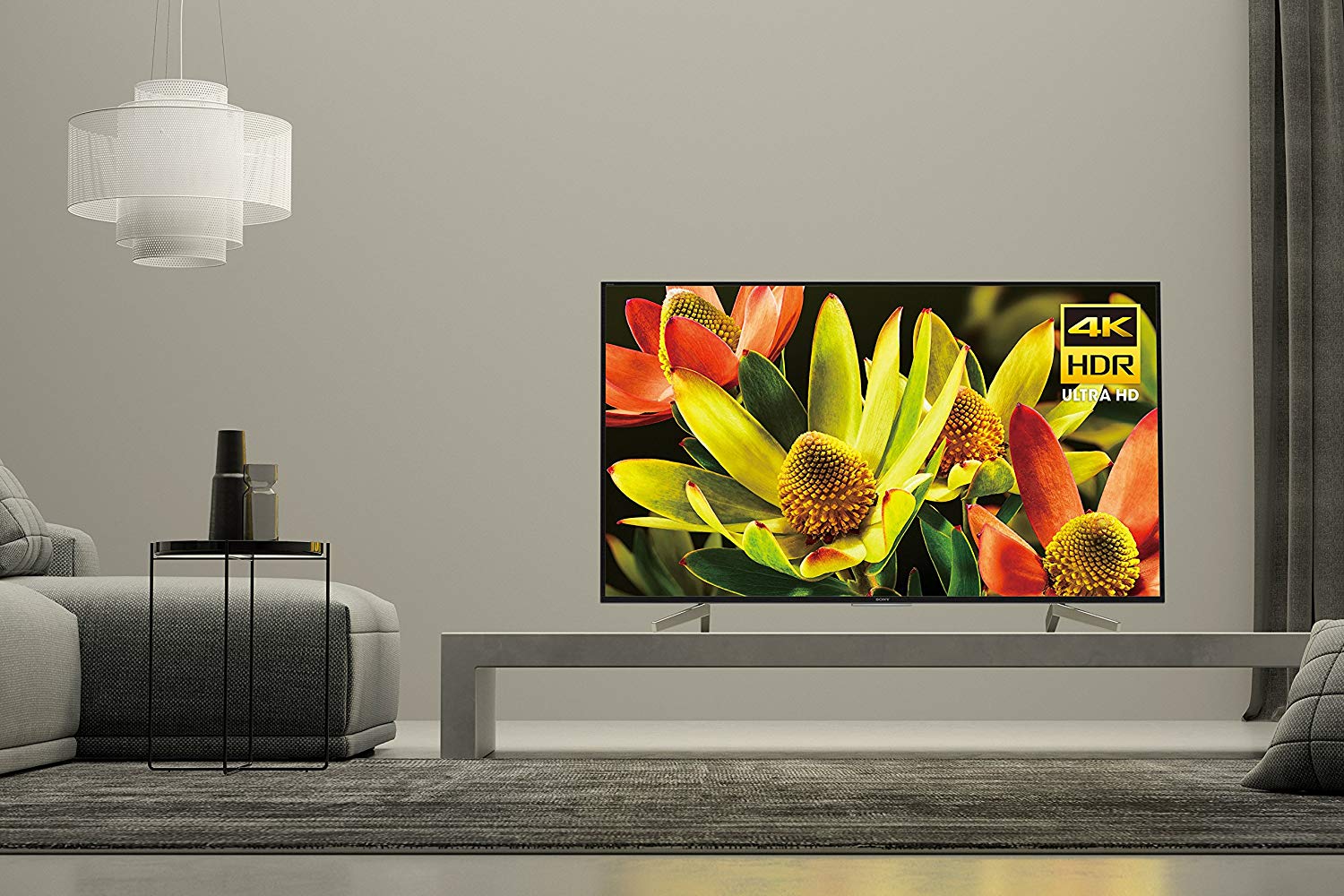
The three.0 standard also adds wide color gamut data and high dynamic range (HDR) metadata, which will make for amend viewing, with a deeper film that has bright highlights, rich shadows and a wider range of colors to work with. This widespread availability of 4K, HDR-enabled content will also allow more people to take advantage of current 4K TVs, where full resolution media is mostly limited to Blu-ray disc or a scattering of streaming sources.
Sound quality is beingness improved, with support for Dolby Ac-4 and MPEG-H 3D Sound formats. These are both multichannel audio formats, with support for surround-audio multi-speaker setups and fifty-fifty 3D object-oriented audio for a much more than immersive audio experience. The older ASTC i.0 standard supports v.one surround sound, simply the 3.0 NextGen Television system allows for up to vii.one.4 channel support and formats similar Dolby Atmos can be offered over the air.
The multiple audio streams will also offer customization options, such as multiple languages and video-description services for the visually impaired.
Circulate meets broadband
One of the biggest changes coming with ATSC 3.0 is a pairing of over-the-air circulate and internet connectivity. That connectivity adds an actress dimension to the ATSC 3.0 system, allowing for a dedicated return channel – an agile stream of data back to the broadcaster, which makes the new circulate system a two-mode IP-based standard. The opens up a wide range of new capabilities never offered past traditional TV earlier.
To get a clearer idea of what that means, I spoke to Tom Butts, the editor-in-chief of TV Applied science magazine, an industry publication aimed at circulate and cable professionals (and owned by Tom's Guide parent visitor Future plc).
"The IP component allows broadcasters to better compete with OTT," Butts said, referring to over-the-top content providers like Hulu and SlingTV, which evangelize content with a set-top box (i.e., cable or satellite). It does this, he says, past letting broadcasters "complement their broadcasts with streaming services, offer most of the aforementioned capabilities enabled by the cloud including DVR controls, VOD [Video-on-Need], targeted advertising and more than flexible audio options."
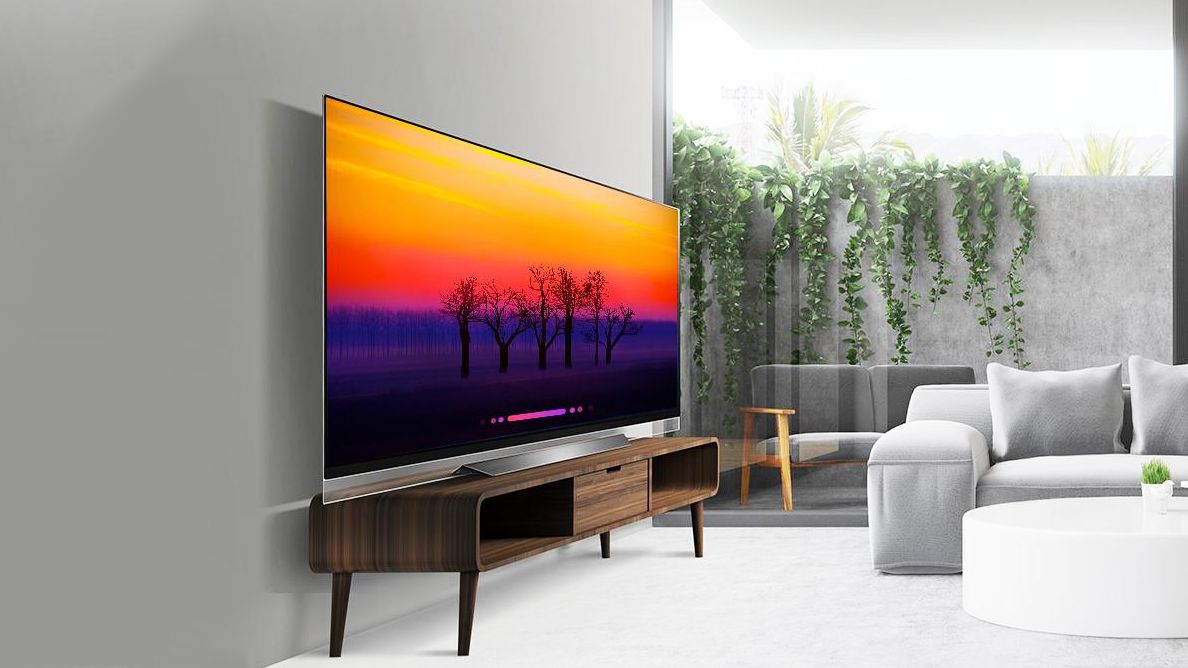
For viewers, that may mean that Telly stations will offering streams of recently aired shows in a "Catch-upwards" service that'due south offered as part of their free broadcast. Or, information technology could allow for a more intuitive menu-style guide to shows and movies, more like what you'll see on streaming apps like Netflix, and then automatically select betwixt live signal or streaming for a wider option of shows.
Information technology also lets broadcasters gather far more than information nearly what people are watching, and when. Instead of relying on ratings organizations like Nielsen, which apply surveys and closely monitored audition samples, it would provide live information almost how many people are actually watching a given testify, minute-by-minute.
It likewise opens the door for addressable ad, the ability to target ads to different users, even within the aforementioned household. That might mean that when the parents are watching the latest sitcom in the living room, they come across car commercials and ads for mortgage refinancing, while a teenaged kid watching the aforementioned bear witness in another room volition encounter ads for gum.
It may also allow for interactive features, like selectable pop-up data that lets y'all check stock prices when a visitor is mentioned in the news, or requite local businesses a way to offer discounts to viewers in their area.
Beyond just "TV"
According to industry analyst Tim Hanlon, CEO of The Vertere Group, a media consultancy business firm, that fusion of circulate and net could see some radically new applications, too.
"The possibilities are virtually endless," Hanlon said. "[It enables] potentially a robust array of 'beyond-TV' functions/businesses such as emergency alerts, hard-drive data-caching, consumer electronics upgrade patches, enterprise data streaming (for a diversity of industries), smart vehicle/cities information, etc."
What those "beyond-TV" functions volition actually be when ATSC three.0 comes to market has still to exist seen. I of the most intriguing potential features would let local authorities and broadcasters remotely power up your Television to display local emergency broadcast alerts. A feature like that could be useful to warning people most earthquakes or storms in their areas.
"In addition, its capabilities in providing far more than targeted and detailed, graphics-rich news and information in emergency situations … could have the greatest affect of all, especially when cellular networks are overloaded," TV Technology'due south Butts said. "In short, information technology does what broadcasters are required to do by police force: Make much more efficient use of the public spectrum."
What near privacy?
The added connectivity does take some privacy advocates a little spooked almost ATSC 3.0, even as the standard makes its first tentative steps into the market.

Even the FCC is concerned. While the FCC canonical the 3.0 standard in belatedly 2017, Commissioner Jessica Rosenworcel offered a dissenting opinion. Among other issues, she wrote that "in that location are still big questions about this new standard. ... I also retrieve nosotros need to better sympathise targeted advertising on television and the implications for privacy, the use of encrypted signals, the collection of audience data, and the susceptibility to hacking and malware."
The issue here is that the new TV standard can gather data simply if you lot provide it with the connectivity to do so. Disconnecting your Telly from the internet should let yous watch OTA Idiot box completely free from whatever data gathering. But, as with modern smart TVs, y'all'll need to be connected to savour the full range of features offered past modern devices and services.
The support for higher data density and modernistic video formats also ways that broadcasters could add digital-rights management (DRM) protections to OTA content, restricting users' ability to apply home-recording hardware, like DVRs.
So far, there's no evidence that either of these concerns volition materialize as real problems every bit the ATSC iii.0 standard goes mainstream in the coming years. And neither of these issues are whatever different than those faced by electric current smart TV users, or anyone who uses online streaming services on other devices. But at the stop of the day, it'southward possible that data monitoring and even limited use of broadcast content might wind up existence the inevitable event of smarter technology.
What devices will get ATSC 3.0?
Y'all're probably request yourself, "Practise I need to buy anything to watch ATSC iii.0 broadcasts?" The answer is yes and no. The Boob tube antennas already on the market volition yet work once the switch is made, since the changes are to the information carried over the air and not the signals that bear it. Whether you have an indoor set of bunny ears or a big outdoor aerial, the antenna you have now will notwithstanding work after your local broadcasters take switched to 3.0.
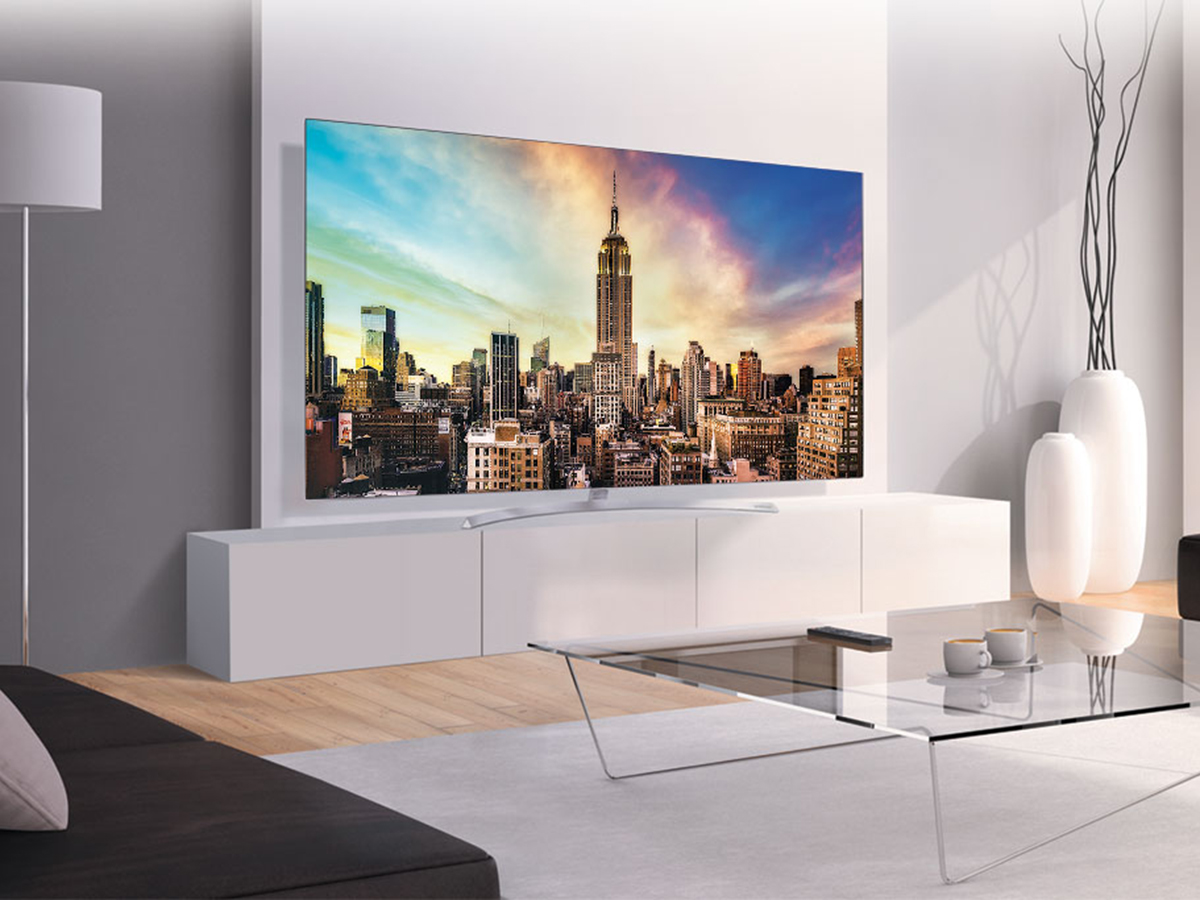
The FCC is actually requiring local broadcasters to go on conveying the current ATSC one.0 standard alongside the new 3.0 arrangement for a five-twelvemonth flow. That clock starts when a station begins using ATSC 3.0, so even if your local broadcasters switched today, you would however have several years before you had to switch to new equipment.
The answer is slightly more complicated when it comes to decoding the new bespeak, still. Your antenna may act like the ears that hear the bespeak, only the TV tuner is what understands the linguistic communication existence spoken, and that's irresolute. And then, yep, you will eventually need to upgrade to an ATSC iii.0 Tv tuner.
The first TVs with built-in ATSC iii.0 tuners started selling in 2020, simply the pick is still fairly limited. Samsung, Sony and LG have all offered one or two ATSC iii.0-set TVs since and then, merely only in their most premium 4K and 8K smart TVs. These NextGenTV-equipped smart TVs will allow you bask the new standard now, but everyone else will accept to wait.
But the benefits of ATSC three.0 may extend beyond your living room and your existing antenna. While new applications are still beingness explored, the industry is exploring several other uses for the new iii.0 signal, including live Goggle box on mobile devices and a number of novel applications for vehicles.
Wait, I can use it on my telephone? And in my car?
Due to the somewhat delicate signal quality of ATSC i.0, the employ and reliability of portable TVs had a sharp refuse over the last several years. All the same, because ATSC 3.0 will introduce improved coverage and betoken penetration it should offer dramatically better performance in situations like a moving vehicle.
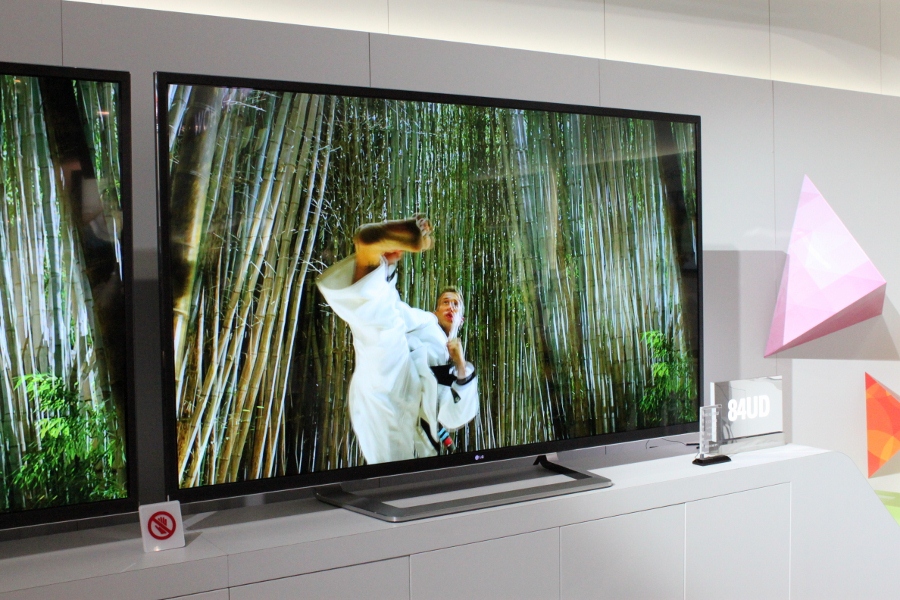
And with the right chipset, your phone could receive ATSC three.0 broadcasts all on its own. Although a lot of people are pessimistic about phone makers putting an option for information-free Tv set into their phones – carriers make a lot of coin cheers to data-hungry streaming services – it'due south worth noting that major phone makers have been involved in the development of the three.0 standard.
"Cellular companies are reluctant to offer their customers devices that would support an alternate (aka "free") streaming service that would compete with their services," said Butts of TV Engineering. "However, the fact that LG, Samsung and Sony take invested in the evolution of ATSC 3.0 bodes well for support in their products, which I'm sure we'll see at CES."
This stands to be great news for mobile entertainment, whether information technology'south in the machine or in your pocket. And, because many of these devices can assemble location information, at that place'southward an opportunity for more local advertising – such as gas station ads when you're on the road – and fifty-fifty more novel uses such as sharing map data and local weather and emergency alerts.
What about existing broadcast channels?
Switching to a new standard won't make your current channels disappear, so there'south no demand to worry most losing your local favorites if you don't buy an ATSC 3.0-capable TV or tuner.
All your favorite shows, including reruns, volition likewise exist available. Because NextGen TV offers greater bandwidth, all of the lower resolution content that'southward already offered on Goggle box can still be shared on the 3.0 organization, including all 1080p and 720p content.
And the existing channels, broadcast under the older ATSC ane.0 standard, aren't going anywhere, either – at least not correct away. The FCC is requiring broadcasters to continue offering ATSC 1.0 broadcasts aslope the new 3.0 standard for v years from the date of transitioning over to 3.0.
ATSC 3.0 timeline: When will it come to my city?
The first test markets for the NextGen Television standard were express to Phoenix, Cleveland and Washington, D.C., but these successful modest tests have spurred a curl out of ATSC three.0 across the continental U.Southward.
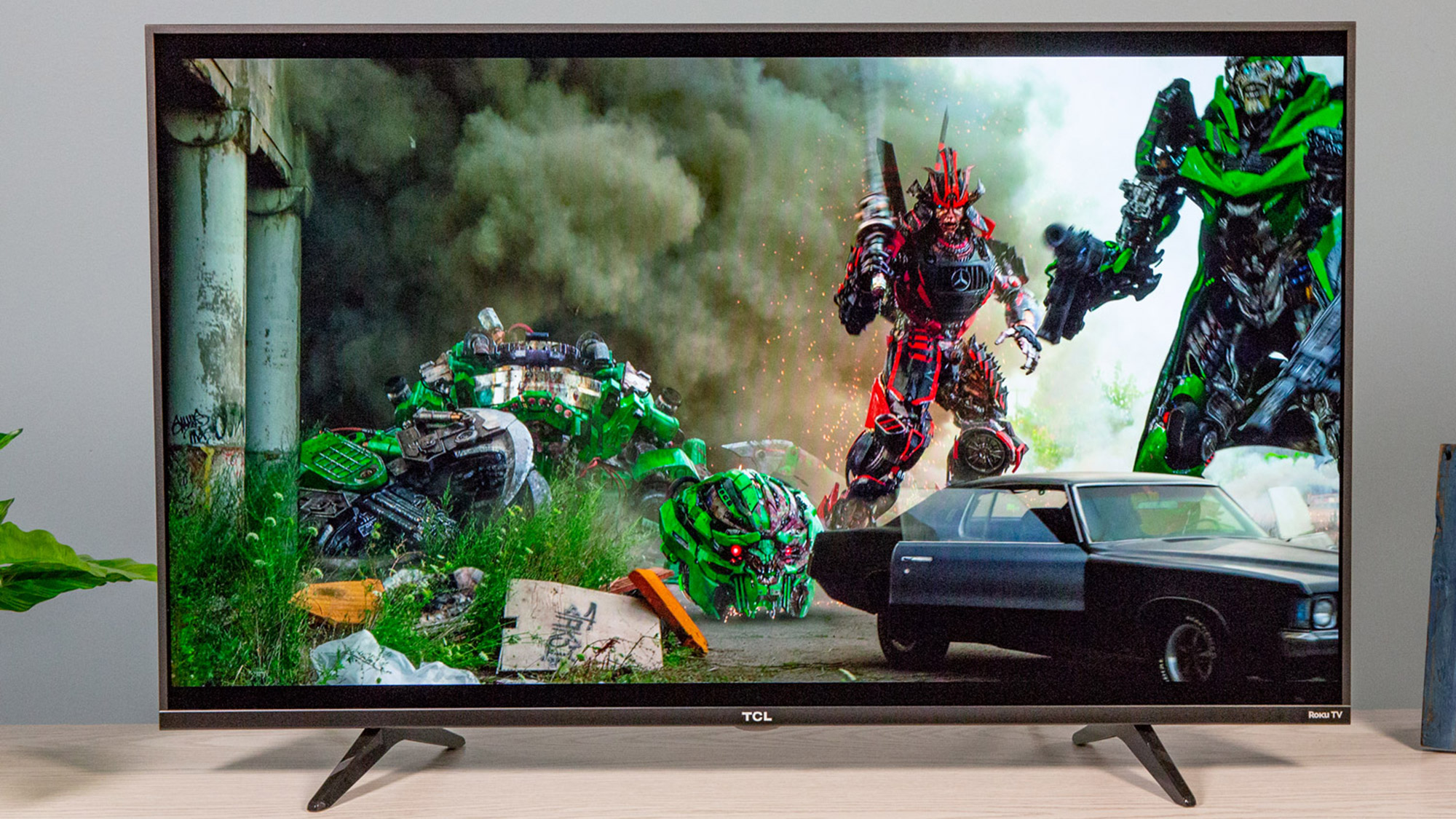
Butts explained, "Earlier this year, broadcasters promised to deploy ATSC 3.0 in the top 40 U.S. markets by the stop of 2020 and likewise, consumer electronics companies predicted that new ATSC 3.0-enabled Television set sets would be bachelor past the vacation season a yr from now."
That sounds like a good kickoff footstep in bringing ATSC three.0 to people throughout the United States. But don't go your hopes upwards too high.
"This is a promise," said Butts, "and unlike the DTV transition, there is no mandate that they follow through."
Unlike the 2009 switch to digital Tv, the move to ATSC three.0 isn't being pushed frontward by government mandates, so the actual timeframe for when the NextGen TV standard goes live in your area is a bit vague.
However, several major TV broadcasting groups have already committed to embracing NextGen Tv, including NBCUniversal Owned Stations Group, Nexstar Media Group, Pearl Boob tube, Sinclair Broadcast Grouping, Spectrum Co. and Univision. Between them, these organizations control hundreds of local broadcasters beyond the land, and should assistance shift the industry toward adopting ATSC 3.0 soon.
A number of major cities already accept ane or more ATSC 3.0 stations transmitting, offering millions of viewers free access to NextGen TV and the features discussed above. It'due south not quite the twoscore markets that broadcasters were originally shooting for in 2020 (the roll out was slowed downwardly by COVID lockdowns, just similar everything else), but it'due south a skilful get-go.
Albuquerque-Santa Fe, NM
Austin, TX
Baltimore, MD
Boise, ID
Buffalo, NY
Columbus, OH
Dallas-Fort Worth, TX
Denver, CO
Detroit, MI
East Lansing, MI
Grand Rapids-Kalamazoo, MI
Las Vegas, NV
Mobile, AL-Pensacola, FL
Nashville, TN
Norfolk-Portsmouth-Newport News, VA
Oklahoma Metropolis, OK
Orlando-Daytona Embankment-Melbourne, FL
Phoenix, AZ
Pittsburgh, PA
Portland, OR
Raleigh-Durham, NC
Salt Lake City, UT
Santa Barbara-Santa Marie-San Luis Obispo, CA
Seattle-Tacoma, WASpringfield-Holyoke, MA
Syracuse, NYTallahassee, FL
Tampa-St. petersburg-Sarasota, FL
And several other markets are set to go ATSC iii.0 stations in the nearly future, with many already submitting applications to the FCC to begin broadcasting on the new standard, and several more than having already announced intentions to starting time NextGen TV broadcast in the near future.
Albany-Schenectady-Troy, NY
Atlanta, GA
Boston, MA
Burlington, VT-Plattsburgh, NY
Charleston-Huntington, WV
Charleston, SC
Charlotte, NC
Chattanooga, TN
Chicago, IL
Cincinnati, OH
Cleveland-Akron, OH
Davenport,IA-Rock Island-Moline, IL
Flint-Saginaw-Bay City, MI
Greenville-Spartanburg-Anderson, SC & Asheville, NC
Hartford-New Haven, CT
Houston, TX
Indianapolis, IN
Kansas City, KS-MO
Little Rock-Pine Bluff, AR
Los Angeles, CA
Memphis, TN
Miami-Ft. Lauderdale, FL
Milwaukee, WI
Minneapolis-St. Paul, MN
New York, NY
Omaha, NE
Philadelphia, PA
Providence, RI-New Bedford, MA
Rochester, NY
Sacramento-Stockton-Modesto, CA
San Antonio, TX
San Diego, CA
San Francisco-Oakland-San Jose, CA
Springfield, MO
St. Louis, MO
Washington, D.C.
West Palm Beach-Ft. Pierce, FL
All told, more than 62 cities are set up to get ATSC 3.0 broadcasts in the nigh futurity, reaching more than 75% of all viewers in the Us.
Should I wait to purchase an ATSC three.0-compatible TV?
The curt respond? No. Even in cities where ATSC 3.0 broadcasts are already happening, the hope of a built-in tuner probably isn't enough to warrant ownership a new TV just even so, and there aren't that many available. External tuner boxes are just starting to come to marketplace, but at that place are simply a few options, and they run anywhere from $199 to $399 – a pretty steep price for costless Television receiver, even in 4K.
Merely if already have (or you lot're looking at ownership) a TV that has an ATSC 3.0 tuner built in, like the LG G1 OLED TV and Samsung QN90A Neo QLED TV, and several models in the Sony 2021 Tv lineup, then NextGen TV back up is icing on the cake, giving you another cool new characteristic to try, and ane that will work with even the best cheap TV antennas.
If yous're already thinking almost ownership a TV, there's no reason to wait a whole year just to become on the NextGen TV bandwagon early. All the same, if the ATSC 3.0 transition moves as quickly as some industry groups want, the likelihood of NextGen Tv sets beingness widespread in the side by side two or three years is high.
In whatever case, we'll be keeping an heart on the situation, and volition make recommendations appropriately, whether the new standard flourishes or fizzles.
Source: https://www.tomsguide.com/reference/atsc-30-explained
Posted by: jaegerhistalt.blogspot.com


0 Response to "ATSC 3.0 explained: How NextGen TV will deliver 4K HDR broadcasts for free"
Post a Comment